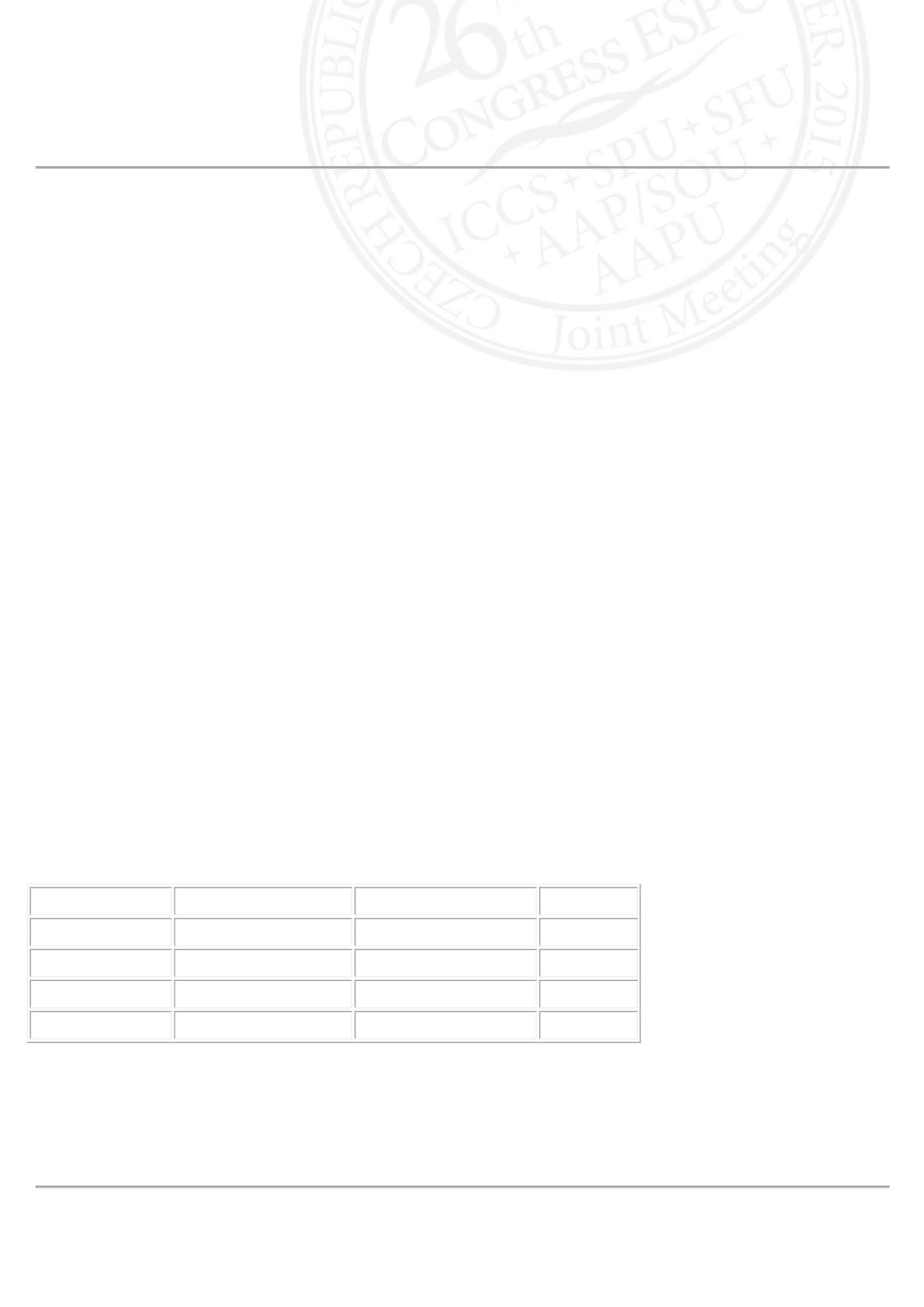

ESPUN S4: CLINICAL PRATICE
Moderators: Louiza Dale (UK) & Hanny Cobussen (Netherlands)
ESPU-Nurses Meeting on Thursday 15, October 2015, 09:35 - 10:25
09:35 - 09:45
ESPUN S4-1
(O)
WHICH IS THE BEST TENS PROGRAMME TO USE FOR IDIOPATHIC BLADDER
OVERACTIVITY IN CHILDREN
Claire FOSTER
1
, Joan MCKENZIE
1
, Keisha HEPBURN
1
, Rebecca HUTCHINSON
1
, Massimo GARRIBOLI
1
, Joanna CLOTHIER
2
and Anne WRIGHT
3
1) Evelina London, Guy's and St Thomas' NHS Foundation Trust, Paediatric Urology, London, UNITED KINGDOM - 2)
Evelina London, Guy's and St Thomas' NHS Foundation Trust, Paediatric Nephrology and Bladder Disorders, London,
UNITED KINGDOM - 3) Evelina London, Guy's and St Thomas' NHS Foundation Trust, Paediatric Bladder Disorders,
London, UNITED KINGDOM
PURPOSE
Neuromodulation is recognised treatment for idiopathic bladder overactivity (OAB) in children. However, there is no
strong evidence about the best frequency to use with both high and low frequencies demonstrating effect. High
frequencies (over 20 Hz) are reportedly associated with worsening of symptoms due to excitement of the neuromotor
system (Lordelo et al. The Journal of Urology 2009;182 (6):2900-4).
The purpose of the study was to compare two different frequency programmes to determine which was the most
effective.
MATERIAL AND METHODS
A retrospective, non-randomized trial was performed in children referred to our tertiary referral centre with idiopathic
OAB. Patients were treated with a TENS machine applied to the parasacrum for 40-60 mins/day for 12 weeks. The
patients were divided into 2 groups: group 1 used a frequency of 10Hz and group 2 a frequency of 80Hz (pulse width
200μs,, mA maximum tolerated per session.) Data regarding days completed, time used, complications/problems and
symptoms were recorded and assessed against ICCS criteria.
RESULTS
A total of 204 patients were recruited; 138 (68%) patients in group 1 and 66 (32%) in group 2. The overall response
rate was 54%.
Results are shown in the table.
Group 1= 66 (10Hz)
Group 2=138 (80Hz)
p value
Fulll response
16 (24%)
36 (26%)
p= 0.864
Partial response
22 (33%)
36 (26%)
p=0.4374
No response
21 (31%)
61 (44%)
p=0.2
Complications
17 (26%)
34 (25%)
p=0.8643
CONCLUSIONS
TENS is successful in the treatment of idiopathic OAB but there is no significant difference in response rate and
complications between two frequencies (10 Hz, 80Hz). Further studies are needed in order to identify the optimal
frequency and placebo effect.












